9 Expert Tips on Using a Paring Knife Like a Pro
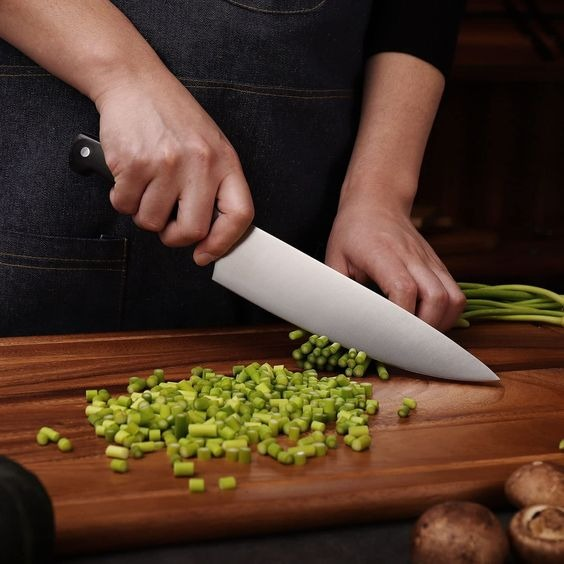
The paring knife is the most handy and versatile kitchen knife, made with high-quality stainless steel and available in different blade lengths. It offers multiple benefits that make it essential for your kitchen. But, using a paring knife in the beginning can be a bit challenging.
Therefore, in this guide, we will explore the nine expert tips that you can follow if you want to use a paring knife like a pro!
Let's get started, then!
Expert Tips on Using a Paring Knife Like a Pro
Here are nine expert tips to help you master using a paring knife like a pro:
Tip No. 1: Choose the Right Knife.
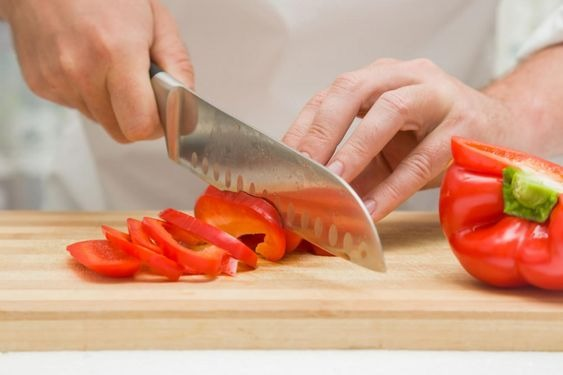
The foremost tip and step before using a paring knife is to choose the perfect blade length and compact size according to your needs. Since it's used for multiple tasks, it comes in wide and narrow lengths. Wider blades are often used for quick chopping and cutting ingredients, while narrower ones are better suited for meat or fish, giving them a juicy look and minimizing surface sticking.
Also, if you're enthusiastic about knives and cooking, you can buy multiple colour knives for specific tasks. you can look out for either stainless steel or carbon steel. You can check out the Sakuto Knives brand store for options.
Tip No. 2: Using the Claw Grip.

After selecting the perfect blade length, you should know how to grab it. Below are the steps described on how to balance and control your knife in your hand securely:
-
First, secure the wooden handle of the knife in your palm with a secure grip, where it feels comfortable and balanced.
-
Then, place your lateral three fingers on the lower part of the knife, so that the weight of the knife shifts onto them.
-
Finally, hold the knife with your index finger and thumb on both respective sides, and you'll have pretty good control over your knife - and you're good to go!
Tip No - 3: Sharpening Your Paring Knife Regularly.

Now, before starting the chopping process, make sure that the knife's edges are sharp and washed properly because, without clean and sharp edges, paring knives are of no use.
Now since, deveining shrimp, trimming, and peeling onions and tomatoes frequently can damage the knife's edges, so wash them regularly and ensure that you sharpen your paring knife every 1-2 months with a proper sharpening tool.
But remember, only sharpen when needed, as sharpening regularly or before it's necessary can also dull and destroy the edges.
Tip No. - 4: Holding the Food Securely.
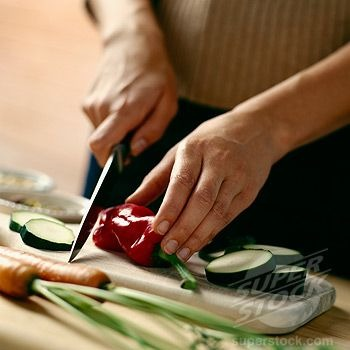
After securing the knife in your hand, it is mandatory to securely hold the food so you don't accidentally cut your fingers. Here's a technique to help you do so: use a claw-hand approach while chopping. Curl or bend your fingers into a claw shape, and keep your hand in a claw posture to safely and efficiently chop vegetables.
Tip No. 5: Use a Cutting Board With a Stable Surface.
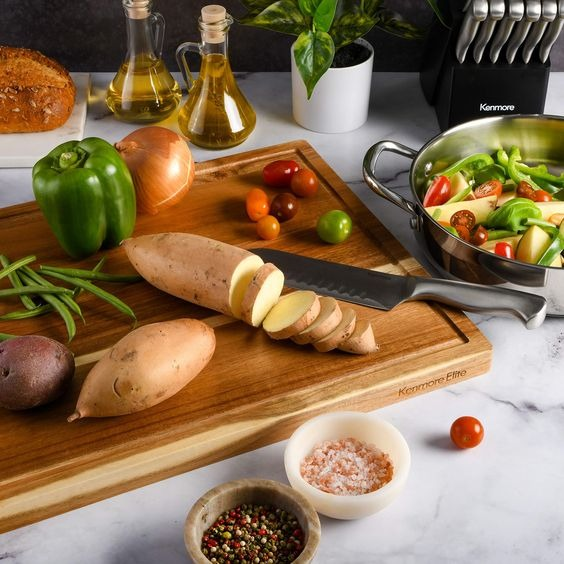
After securing the grips of the knife and food, you should have a stable chopping surface to cut on. For it, consider using slip-resistant mats, which increase friction and stability, and cutting boards with built-in non-slip grips.
Moreover, you will face a hard time, especially when you're dealing with tough meat blocks that are more likely to slip. To overcome this, consider using cutting boards made from various materials and sizes to handle specific food items.
For instance, plastic boards for cutting vegetables, wooden boards for an aesthetic and natural look (though they require periodic oiling), and varying sizes for different tasks. Small boards are ideal for quick slicing, while large rectangular boards are better suited for cutting meat.
Tip No. 6: Cutting Away From Your Body.
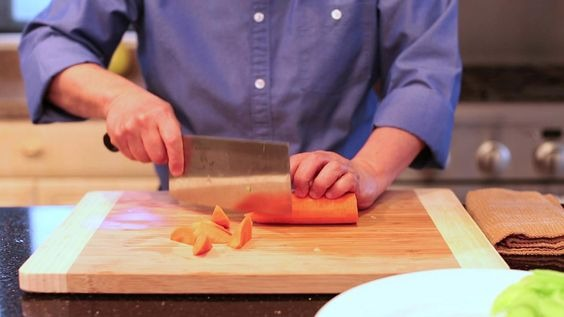
Before you begin, ensure the safety of your body skin. Paring knives with wide and narrow blades are designed for cutting, and excessive sweating can cause the knife to slip or lead to skin lesions. So, make sure to keep them at a safe distance from your body while chopping to avoid any accidents.
Tip No. 7: Using a Back and Forth Motion for Slicing.

After taking the necessary precautions, grab the knife and food in the above-mentioned positions and start with a wave-like back-and-forth motion. It is the easiest, most balanced, and controlled way to slice. Move it in forward motion, taking it through the full range, and then slice and trim in a backward manner until it's fully chopped up.
Tip No. 8: Use the Tip of the Knife for Delicate Tasks.
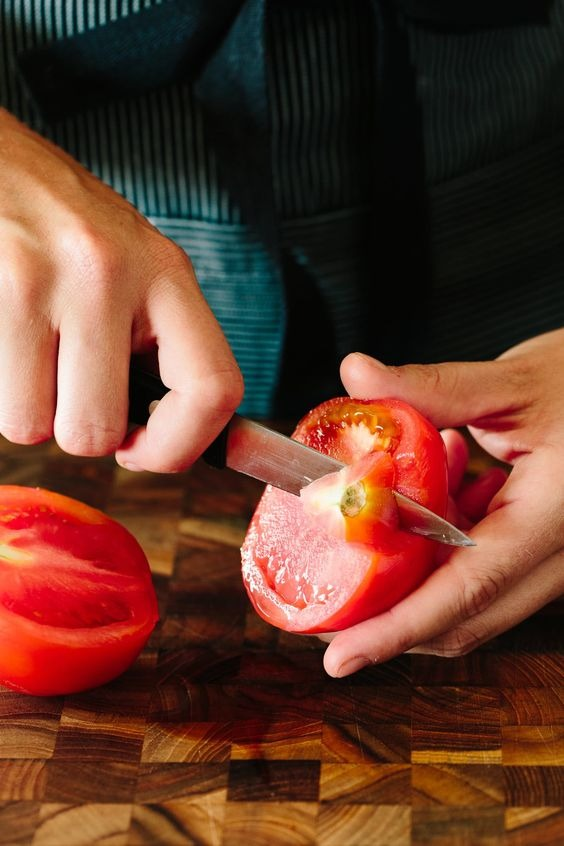
Besides slicing the food in a wave manner, you can also use them for detailed and delicate cutting, such as cleaning vegetables and fruits with their pointy tip. Furthermore, you can utilize smaller-sized knives to add a personal touch to your salads by cutting vegetables and fruit like apples into various shapes and sizes, making them visually appealing.
Tip No 9: Practicing, Practicing, Practicing!
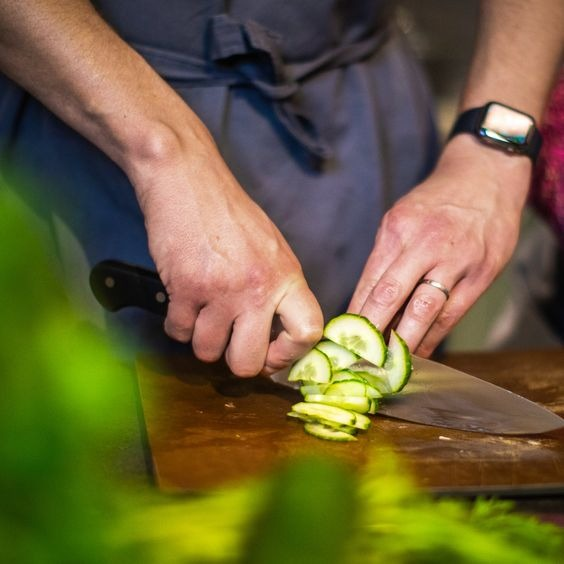
As the saying goes, "Practice makes the man perfect." The most important tip or step to mastering any skill, whether it's cooking or anything else, is to keep practicing consistently. Be patient, give proper attention to every detail, and don't hesitate to use the knife. Maintain balance and control by following our mentioned tips; you'll become proficient in no time.
FAQs
How Often Should You Sharpen a Paring Knife?
You should sharpen your paring knife often after 1-2 months with a proper sharpening tool to maintain its effectiveness. Because deveining shrimp, trimming, and peeling onions and tomatoes can damage the knife's edges. Remember, only sharpen when needed, as sharpening too frequently or before it's necessary can also dull or damage the edges.
What Is the Best Way to Store a Paring Knife?
The best way to store a paring knife is to place it in a knife block. It could contaminated with poisonous bacteria if kept in a dishwasher. So, it's better to store it in its designated block. You can check out our stock at Sakuto Knife Blocks.
Can a Paring Knife Be Used for Tasks Other Than Peeling and Cutting?
Yes, besides peeling and cutting, paring knives are also ideal for detailed and delicate cutting tasks, such as cleaning vegetables and fruits with their precise pointy tip. Additionally, smaller-sized peeling knives can be used to add a personal touch to your salads, making them visually appealing and garnished with precision.
Where to Buy Best Paring Knives?
We hope you have learned now how to use paring knives like a pro. But have you purchased one for your use?
If not, then check out Sakuto paring knives!
Sakuto is a trusted brand on which you can trust! Our knives are functional and a testament to the art of fine craftsmanship, which is celebrated for its commitment to excellence and precision.
Moreover, our products are meticulously crafted from homemade Damascus steel and are renowned for their exceptional durability and razor-sharp edges.
Explore our collection now and find the perfect one for yourself!






